Yuji Okitsu extends two-story house with an annex in japan
Japanese architect Yuji Okitsu completes the renovation of a 90-year-old house perched on the edge of a hillside in Kamakura, Japan, transforming it into a wooden atelier. Designed as an annex to the main two-story residence, the new space serves as a creative space where the clients can host artists and culinary experts.
Upon visiting the site, the architect encountered a skeletal framework—its original floors, walls, and ceilings entirely removed, leaving only exposed wooden pillars interspersed with the surrounding trees. This renovation sought to preserve and reveal these historical layers, opting not to conceal the reinforcements but rather to highlight them as visible markers of the building’s resilience.

all images by Satoshi Nagare, unless stated otherwise
the architect preserves THE original wooden framework
The structure, nestled on a flat site amidst the Kamakura’s characteristic cliffs, respects the passage of time by integrating aged materials with new interventions. The Japanese architect restores the window frames and foundation stones while also applying Yakisugi—charred cedar boards—on the exterior to further enhance the architectural narrative of continuity and aging with grace.
Atelier In Kamakura’s ground floor houses the atelier, kitchen, and dining area, with a circulation system designed to eliminate dead ends, promoting fluid movement. A stairwell and varied ceiling heights compose a dynamic spatial experience, with traditional muso-mado windows on the upper floor facilitating natural ventilation and exchange of atmosphere between levels. Throughout the project, material selections—including reclaimed chestnut flooring from the client’s previous home and antique window frames—anchor the design in personal history.
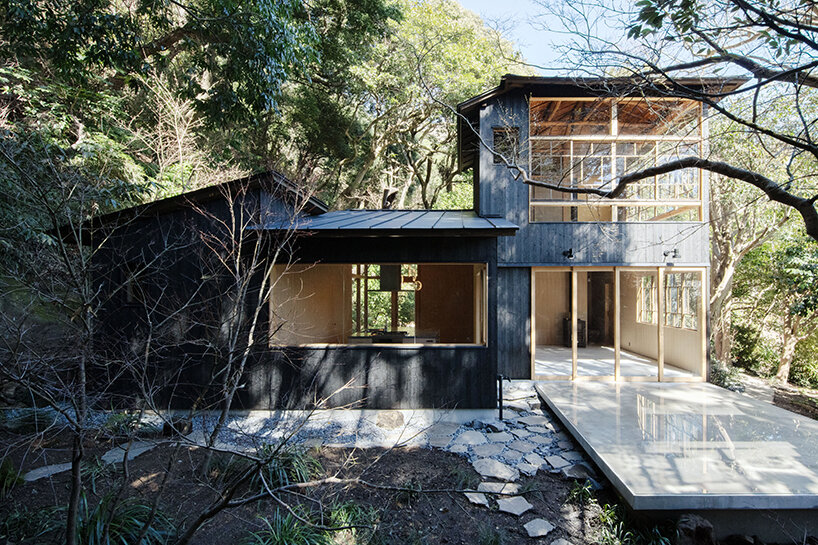
the Yakisugi exterior glitters in the sunlight and blends in with the shadows
concrete flooring interacts with natural elements
By preserving the layered history of the original residence, Yuji Okitsu’s intervention in Kamakura reflects his sensitive approach to adaptive reuse. The concrete flooring extends from the atelier to the garden deck, its continuous surface visually merging the spaces. The concrete deck is designed to collect a thin layer of water during rainfall, producing ephemeral rippling reflections that interact with the architecture. This transient water basin accentuates the emphasis on time and transformation, creating a living connection between built space and natural phenomena.
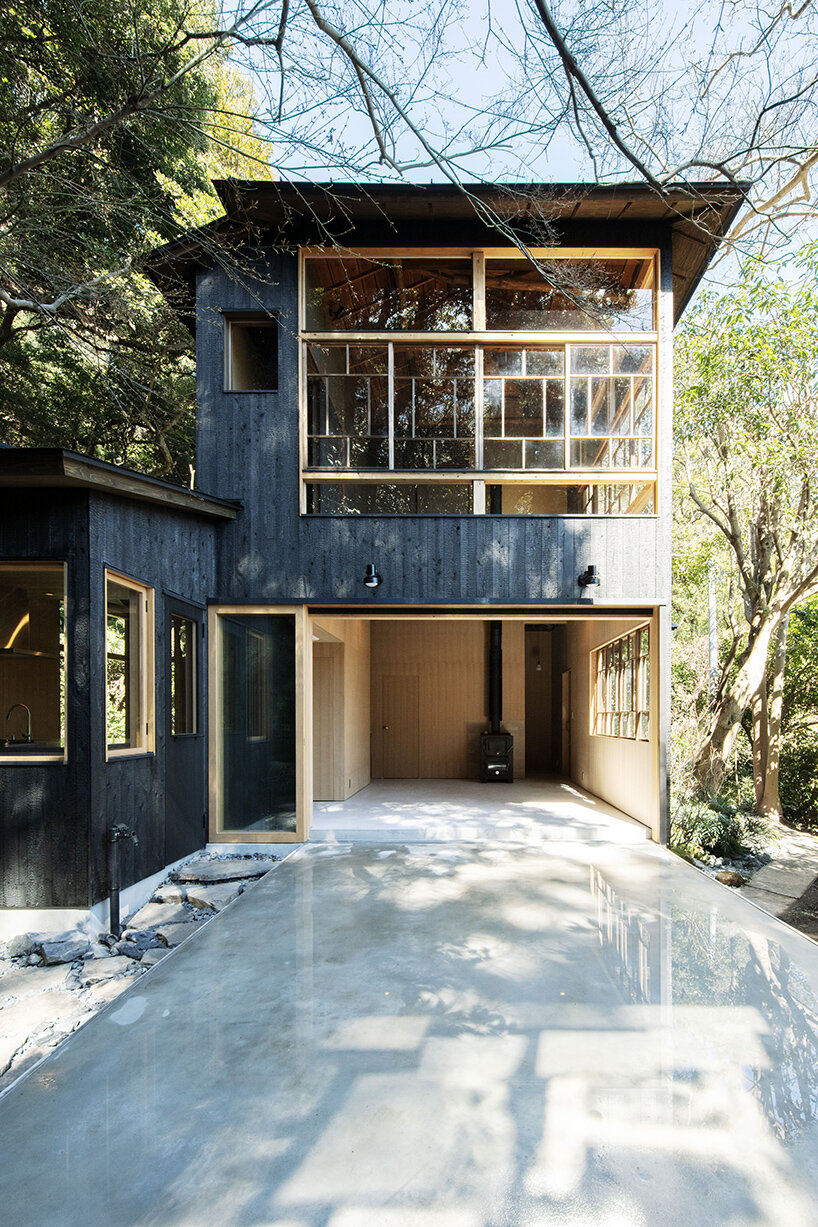
the interior floor and exterior deck have the same finish | image by Yuji Okitsu
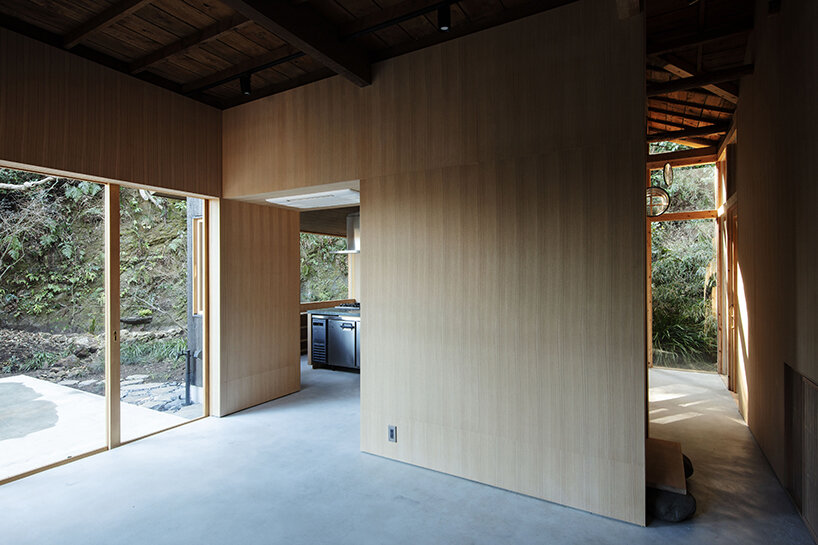
the first floor is mainly designed as a space without dead ends, allowing one to circulate freely
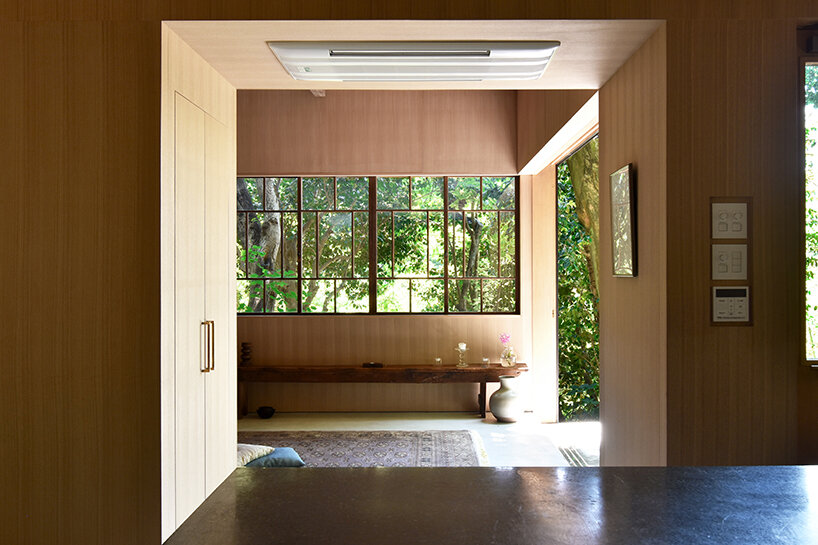
open and closed spatiality are created with various frames | image by Yuji Okitsu
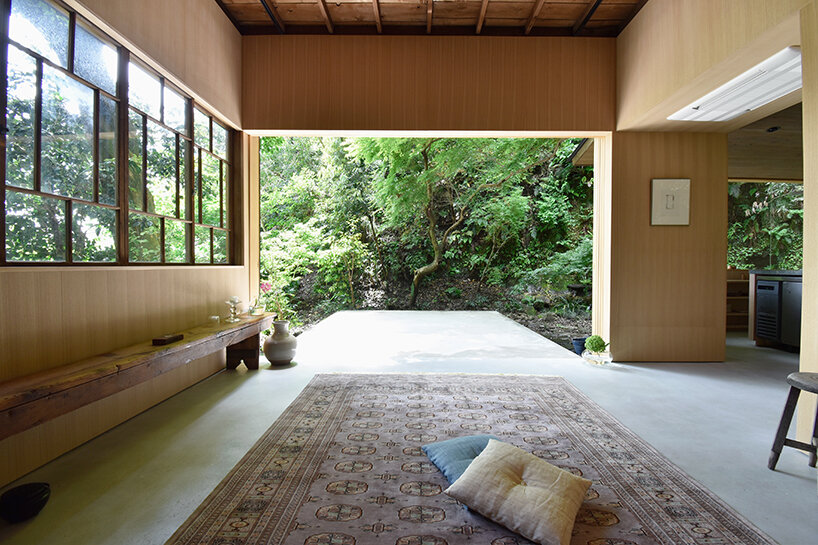
a single material floor crosses the opening | image by Yuji Okitsu
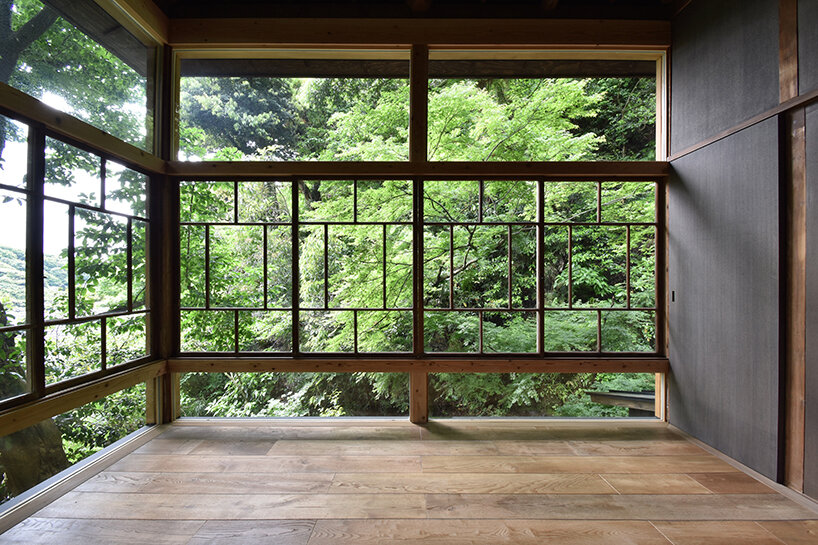
the repaired windows are set up to appear as if they are floating | image by Yuji Okitsu



